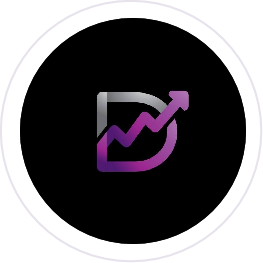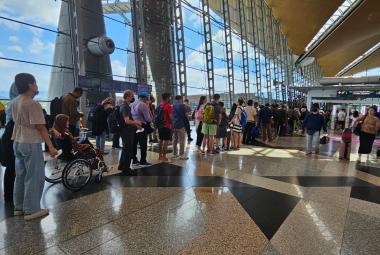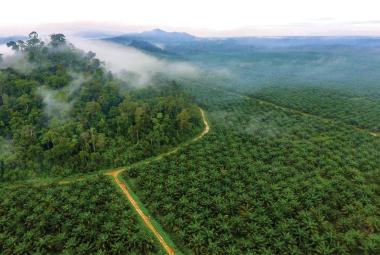By Stéphanie Groen, Aurecon’s Director for coastal and climate change in Asia
As a child growing up in The Netherlands, my family home was built on one of the ‘old dunes’ which is still part of an extraordinary 6km wide stretch of sand dunes facing the North Sea. Dunes have always been a natural form of coastal protection; it was an everchanging landscape of endless opportunity and the perfect place to spend time outside while learning about biodiversity, coastal protection and drinking water management. To date, the natural filtration system of the sand dunes still provides some of the best quality tap water to the Amsterdam region.
 At home, and where possible, we ate mostly from the land. Since 1983, my mother has tended to her own organic vegetable garden. My dad used to bake bread for the family and my mum made us recycle biodegradable waste as well as plastic – something which I didn’t realise was very special until I went to school and discovered it was unheard of! This upbringing - and the fact that most of us lived or operated below sea level and weren’t really bothered by it - taught me many things.
At home, and where possible, we ate mostly from the land. Since 1983, my mother has tended to her own organic vegetable garden. My dad used to bake bread for the family and my mum made us recycle biodegradable waste as well as plastic – something which I didn’t realise was very special until I went to school and discovered it was unheard of! This upbringing - and the fact that most of us lived or operated below sea level and weren’t really bothered by it - taught me many things.
The most critical lesson is that we should always try to work with what nature provides and place focus on opportunities and agility as it will make it easier to adapt to a changing environment. This concept has been ingrained in my mind from a very young age and is now one of the greatest shifts governments across the globe are making when it comes to tackling climate change. How do we reduce the impact of climate change on our country and on our communities?
Underpinning this shift from impact to adaptation is a powerful realisation. Fortunately, governments are now embracing this knowledge at the highest level, based on global data availability and vast amounts of science supporting facts and figures.
Recently, Singapore’s Prime Minister Lee shared in his 2019 National Day Rally speech that climate impacts are likely to worsen in coming decades, which is a clear acknowledgement that “Climate change … is one of the gravest challenges facing humankind.”
The story is not dissimilar across the Southeast Asia region, where, according to leading authorities such as the World Bank, Asian Development Bank, and the UN’s Intergovernmental Panel on Climate Change, the region will continue to be one of the most vulnerable on earth to the impacts of global warming.
In a recent article by my colleague Stephane Asselin, he wrote of the importance of governments and industries continuing to adopt mitigation measures to curb the carbon footprint, and he also stressed the criticality of adaptation measures which aim to build resilience and keep people safe by minimising the impacts of these extreme events.
Huge shift to acceptance of digital in mitigation and adaptation to climate change
Across Southeast Asia, increasing numbers of governments and industries are embracing mitigation and adaptation measures.
From Singapore’s coastal protection plans, circular economy initiatives, carbon profiling and renewable energy microgrids to Vietnam’s major solar power plant, many of these adaptation measures are supported by digital technologies such as models using accurate environmental and climate data to analyse and predict future changes in air and seawater temperature, rainfall inundation or sea level rise. Digital decision systems utilising various layers of climate, building, infrastructure, economical and spatial data also help users to make better decisions on assets and infrastructure management, economic losses, risk mitigation and most importantly, where first to adapt and invest.
In Singapore, for example, a range of existing data sources, digital tools and technologies – AI, data analytics, Geographic Information System (GIS), BIM, digital models, virtual reality, real time sensors, and future prediction models - are being used to identify which areas to prioritise in terms of protecting the country, its people and their livelihood against the impact of sea level rise. But it does not stop there. Information is analysed and planned to a detailed operational expense level, such as identifying which flood gates can be repaired versus which ones need immediate upgrading within the next decade, in line with the predicted rising sea levels.
Digital decision tools make it possible to overlay and integrate different data layers with information on, for example, economic values, BIM, GIS and weather systems to create a virtual replication of the real world. This is where it becomes possible to play with different scenarios: ‘What if tomorrow a tropical storm creates 80mm of flood in this entire area? What does that mean for my assets and infrastructure? Is there any critical infrastructure (i.e. hospital) that should not be impacted, at all costs? What does it cost to repair? How best to protect this area against this event? What does it cost to protect the area versus just the critical infrastructure?’. These are all very important questions and digital tools are extremely useful in understanding the urgency of situations, addressing potential problems, establishing cost-benefits and subsequently, advising the most cost-effective adaptation option.
Digital technologies and tools are also phenomenally valuable in emergency preparedness and response
The unpredictability and complexity of disasters presents huge challenges in responding to them in a timely fashion. Investing in data and digital technologies (e.g. artificial intelligence, real-time sensors, drones etc) do not only strengthen early warning systems, but more importantly speed up disaster recovery, assess damage, locate vulnerable people and help prioritise response efforts that bring a much needed connectivity for communication and information sharing during a crisis. There is great opportunity here across Asia to adopt some of these digital tools and move ahead to ensure countries are better prepared for emergency response situations.
Catalysing faster digital innovation: partnerships are key
Across Asia, the capacity to adapt to climate change varies from country to county. Rising temperatures, rising sea levels, changing frequency of extreme weather events that cause floods, droughts, typhoons, forest fires and coastal inundation is different for each country: some are more fragile, some have high populations living in poverty, some have more volatile political structures, some have less resources. These different challenges and realities ultimately drive the timing and type of (physical) adaptation and related investments. What may be a good climate adaptation solution for one country might not work elsewhere. Hence, it is vitally important that adaptation measures consider the unique contexts of each country, region, city and community.
To determine the best solutions, it is crucial to ensure that appropriate funds are available to implement what is most critical. While we have seen positive progress under the supervision of the World Bank and the Asian Development Bank, a common roadblock to progress is a desire to reinvent the wheel when it comes to technology and solutions. Reinventing the wheel takes up significant resources, funds and time. However, those successfully overcoming this roadblock are doing so by forging key partnerships to leverage existing knowledge, capabilities and developing or using existing tools that can be integrated on a case by case, country by country basis.
This is where the work undertaken by both the Hong Kong and Singapore governments could be of great value to the region. It will enable countries like Thailand, Indonesia, Vietnam and Philippines to leapfrog straight into using digital decision systems for climate adaptation.
By tapping into knowledge that is already available and establishing partnerships, digital innovations come to the fore more rapidly, and in many cases can be applied instantly.
This is where gains are being made. This is where true progress and innovation lies. This is how all countries across Asia – no matter their unique contexts – would get ahead of the game and create the agility needed to respond and adapt within the next 10 years, as they seek to develop their cities while protecting their economies, their infrastructure, their people and their livelihoods from the undeniable impacts of climate change. - DagangNews.com










